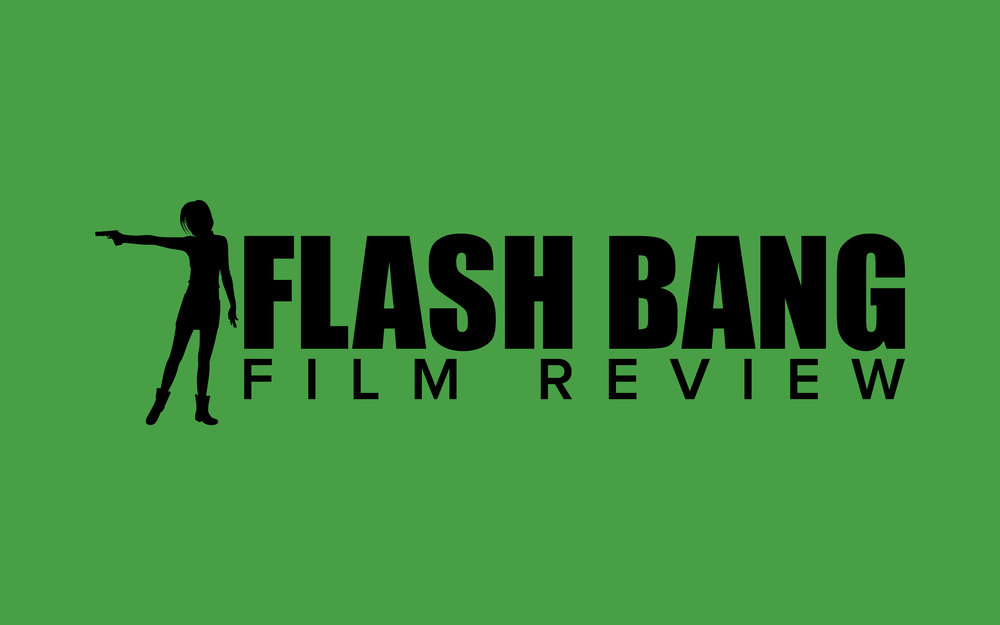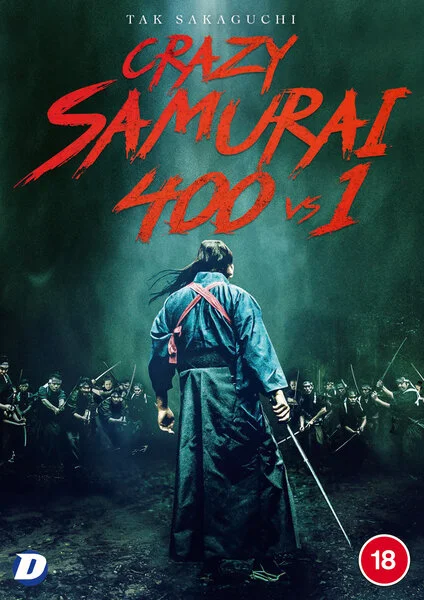CRAZY SAMURAI: 400 VS 1
Directed by: Yûji Shimomura
Starring: Tak Sakaguchi, Kento Yamazaki, Akihiko Sai
Following the defeat of their champion at the hands of renowned swordsman Musashi Miyamoto, the Yoshioka clan tries to lure him into a trap, where 100 samurai and 300 retainers and mercenaries are waiting to ambush him. However things don't go according to plan, and the Yoshioka thclan faces extinction at the sharp edge of Musashi's blade…
Crazy Samurai evokes a high level of respect and admiration for the technical skill involved, but a film which largely consists of one long, unedited fight scene does raise a few issues.
Musashi Miyamoto is one of the history books' most larger than life characters, having fought many duels through out his life and perfecting a two sword fighting style. He is considered a "Sword Saint" in Japan and there have been numerous films about his life. Tak Sakaguchi plays Miyamoto as an arrogant man who is only concerned with winning and establishing his own legend. We first meet him committing a very taboo murder in order to destroy the Yoshioka clan but it leaves him right in the middle of the hornet's nest he's just kicked over. What follows is a 77minute, unedited, one-take fight scene as Musashi takes on all 400 of the warriors sent to ambush him.
There are two things to marvel here: the technical skill involved in maintaining a single shot take for such a long period of time and the physical endurance of both Tak Sakaguchi and the camera operator who has to keep up with the action, sometimes zooming in close, other times standing at a distance to show the enormity of the task.
The physical exertion is immense, even when you consider that it's all make-believe for the camera. There are moments when Tak/Musashi is so exhausted he's literally staggering and even dropping to a knee at times, his breathing rasping. But he's able to push through, relying on reflex and muscle memory at times to keep battling as people through themselves at him.
Tak does get a few mini breaks, as he moves through different groups of warriors. He has managed to think ahead and stash small water supplies and even replacement swords in an abandoned village. There is even a moment where the camera turns to an argument between two samurai about whether the continued attack on Musashi is a futile exercise at this point, allowing Tak a couple of minutes to chug a couple of energy drinks before jumping (literally!) back into the action.
Undertaking a huge technical exercise such as this does highlight a few problems. The longer the scene continues, the more evident they become. First of these is the fight choreography, which is mostly limited to a few sword strokes. About a third of the attackers literally just run at Musashi with their swords above their heads, screaming - but it would seem they forgot to actually attack and instead get sliced through the belly. One of Musashi's other moves is to smash onto the top of the head, and there is at least one moment where you can see the opponent's wig (covering their protective head gear) slip down over their eyes when struck.
There are a few attempts to break up the pattern with more formidable opponents (i.e. they last slightly longer than one or two clashes of the sword). Chief among these is Baiken Shishido (Akihiko Sai), a fighter with whom Musashi really did have a duel with. He's notable because his weapon of choice is kusarigama, a weighted hooked blade on the end of a chain. There are also moments where Musashi fights with two swords at once, which was actually his preferred fighting style.
On the DTV Digest podcast we often discuss the point of short films which are nothing more than a set up for a fight sequence, other than to show off the skills of the performers and the technical skills behind the camera. Its difficult not to aim that same criticism here, as there is very little story and seemingly even less point to it other than to show that it can be done. If anything the film seems to be making a point about the futility of just following orders for orders' sake. Musashi is able to kill the head of the Yoshioka clan even before the ambush has begun, yet wave after wave of warriors still attack him.
What is also strange is that when the scene finally does ends its very abrupt, jumping ahead a few years where Musashi isn't quite so lean but just as mean. This is a more conventionally shot scene, albeit speeded up, and shows that Musashi is still just as deadly as he was in his younger days. It is also arguably a more exciting scene than the marathon of killing we've just endured.
THE VERDICT
As a technical exercise in what can be achieved in so far as one-takes are concerned, this is a superb achievement and is to be commended. However there is little here to interest the casual viewer, except the sheer endurance displayed in front of the camera by Tak Sakaguchi. Special mention for the score by Hidehiro Kawai, which manages to punctuate the action very well and bring different moods and levels of tension to the proceedings.
7 out of 10 MikeOutWest
Dazzler Media presents Crazy Samurai: 400 vs 1 on Blu-ray, DVD & Digital 5th July
Pre-order on Amazon: www.amazon.co.uk/Crazy-Samurai-400-Blu-ray/dp/B091BTM3WT




